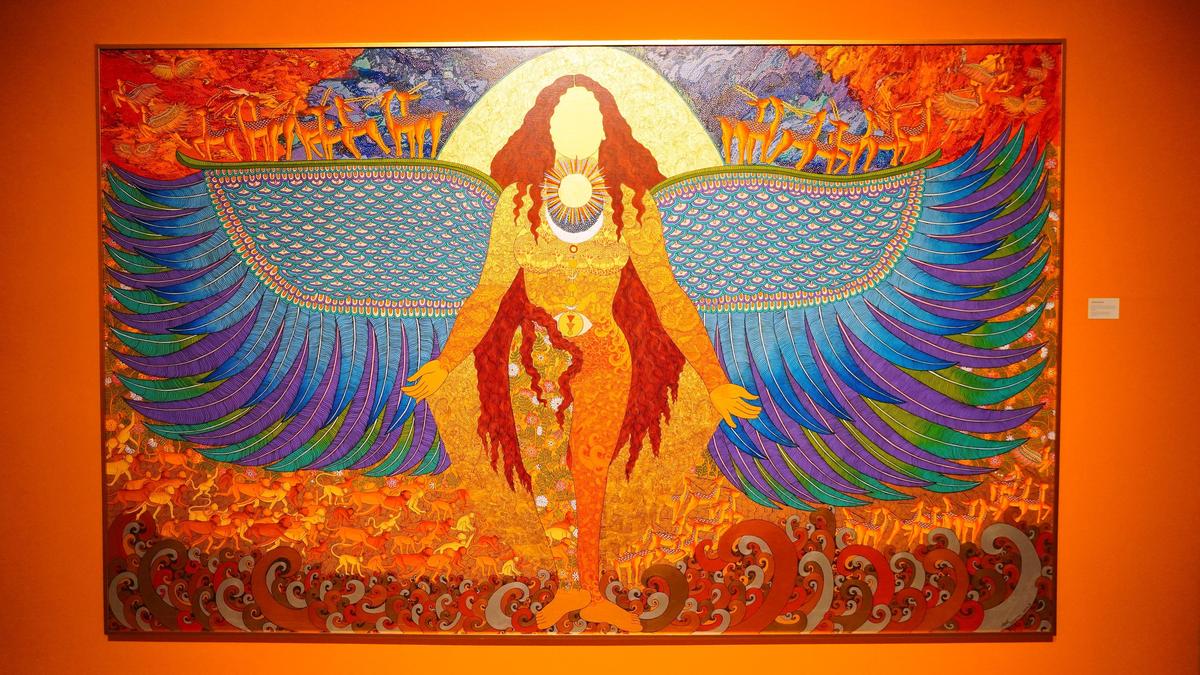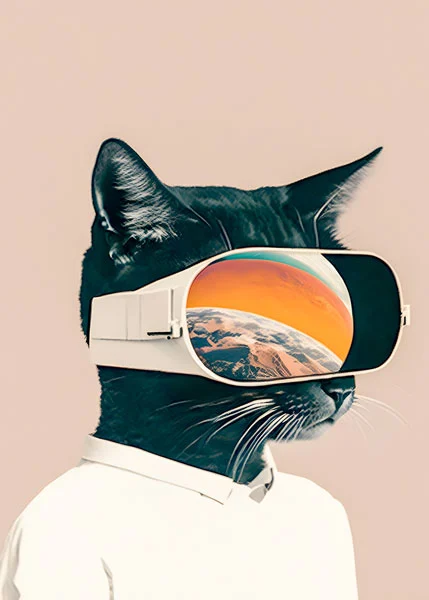“Despite people landing on the Moon, planning to grow plants on it or wanting to shift there, it does not cease to captivate one’s imagination,” laughs Seema Kohli.
We are talking about her Moon Series currently on display at NGMA Bengaluru where the Delhi-based artist is exhibiting her works at a show titled Kaal Netra – Sacred Matrices: Seema Kohli’s Living Mythic Universe. The show, with over 200 pieces created by Seema since 2004, comprises all manner of media from her multi-disciplinary practise and has been put together by Darshan Kumar YU, deputy curator, NGMA Bengaluru.
Seema says her fascination with the moon began in childhood, spurred by her interest in stories and her father’s observations of philosophy. “I am interested in the narrative and not the myth or spiritual or religious aspect alone. That is how folk tales come into being — when people make narratives their own.”
“I believe mythology is a way of interpretation. We don’t have words, so we create other ways of expression that make it easier for us to comprehend what happens all around us,” she says, adding that even while quite young she was able to best express herself through images on paper.
Talking about the Moon Series, Seema says it depicts the moon’s waxing and waning and 28-day cycle, and is a throwback to one of her previous works. “That piece was an installation. However, when I started working with thread, sequins and other embellishments on canvas, I wanted to work on this concept once more, because I felt it calling to me.”
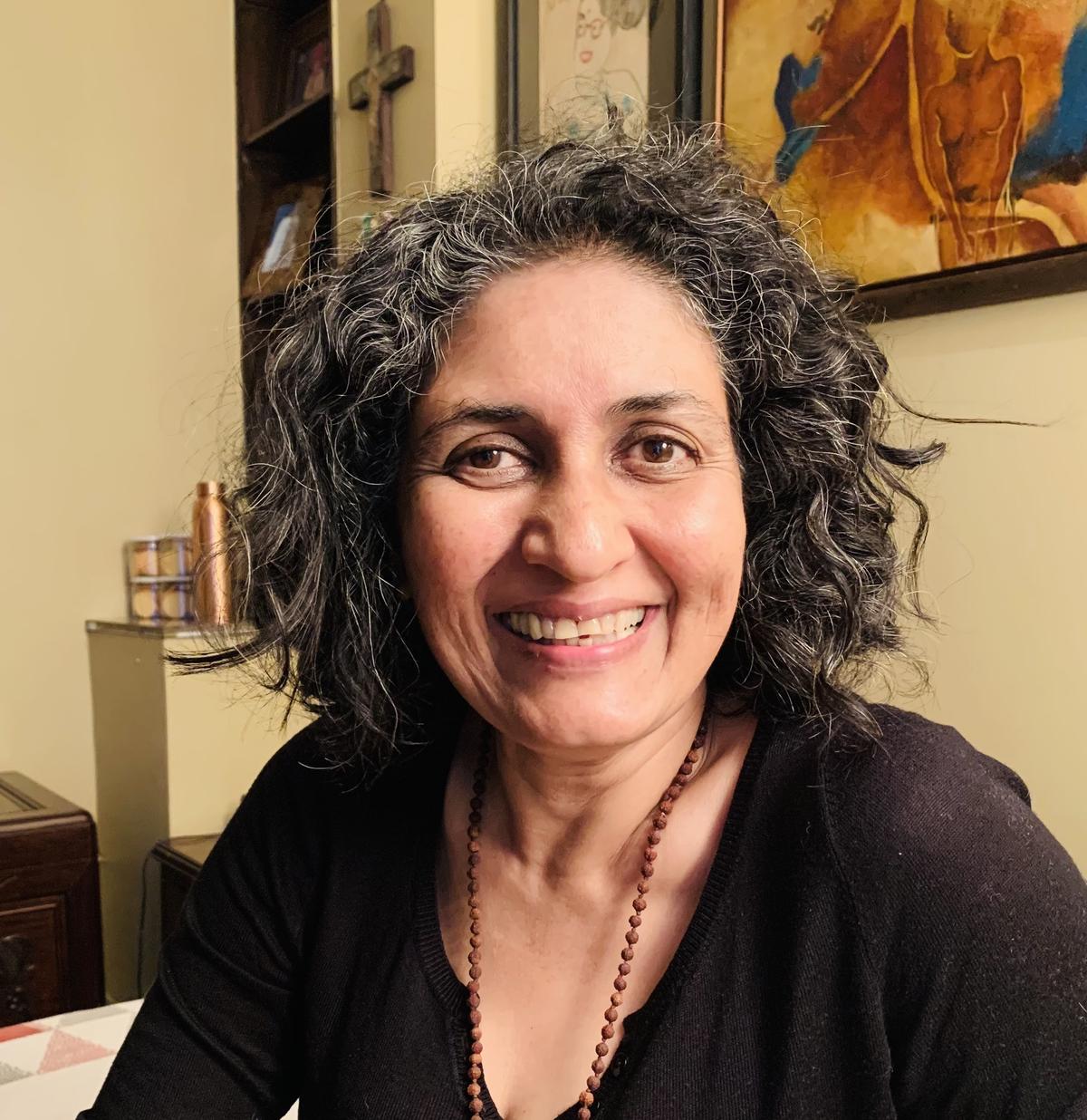
Seema Kohli
| Photo Credit:
Special Arrangement
Once and again
“Much like the waxing and waning of the moon, there is a balance which comes through the feminine in someway or the other. “The constants remain constant,” she says, referring to the recurring themes in her work.
“The idea of the feminine, the golden womb, the idea that we are all interconnected, and that creation is constantly happening is the overarching theme. The world might be going crazy just now, but Nature has its own cycle. It comes back to you, bashes you up and moves on.”
We move on to Storm in a Teacup, an art book of sorts, created out of etched prints. “I enjoy printmaking because it is an all-encompassing process that draws my attention to only one thing. You work on a plate, carry out its acid treatment, watch it take shape and then, do it all over again — creating another print that is similar, but with another iteration.”
Seema says she has been working on at least one series of prints every year, a practice she began around 12 years ago.
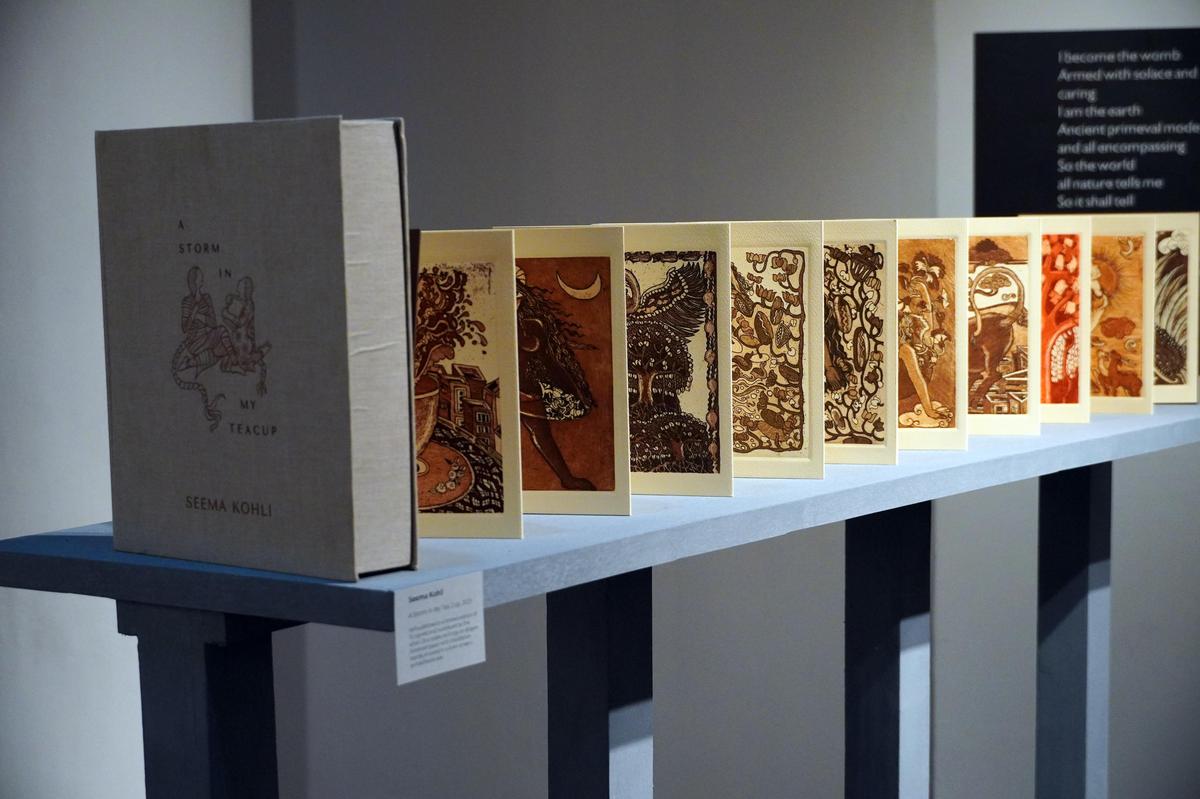
Storm in a Teacup by artist Seema Kohli
| Photo Credit:
Special Arrangement
“I’ve always wanted to create an artist book and work with etching, one of my favourite media,” she says, adding that her entry for a fair on artist books resulted in, ”an accordion book, which could not only stand as an art piece, but also be held in one’s hands and enjoyed,” which is an aberration as etched prints are usually framed and mounted.
On display are a couple of Chinese screens adorned with art on both sides. Seema says, “All of my work is inspired by my influences or things that affected me during my formative years.” She goes on to add how she was deeply moved when she was about 12 and her father patiently explained the Chipko Movement.
“Even today, a treasure trove of memories magically open up when I see trees; I became a tree hugger as a child and it built an empathy within me. As an adult, you see how trees are a symbol of Nature, with parallels in the scriptures — the Bhagavad Gita, Buddha’s enlightenment was under the pipal tree, it is seen in Sufism and Christianity, too. In most of my work, trees have an important role to play and I’m driven by the idea of trees growing on their own, wild and free.”
Tongue in cheek
Perhaps the most eye-catching display at the show is an installation of many-coloured tongues.
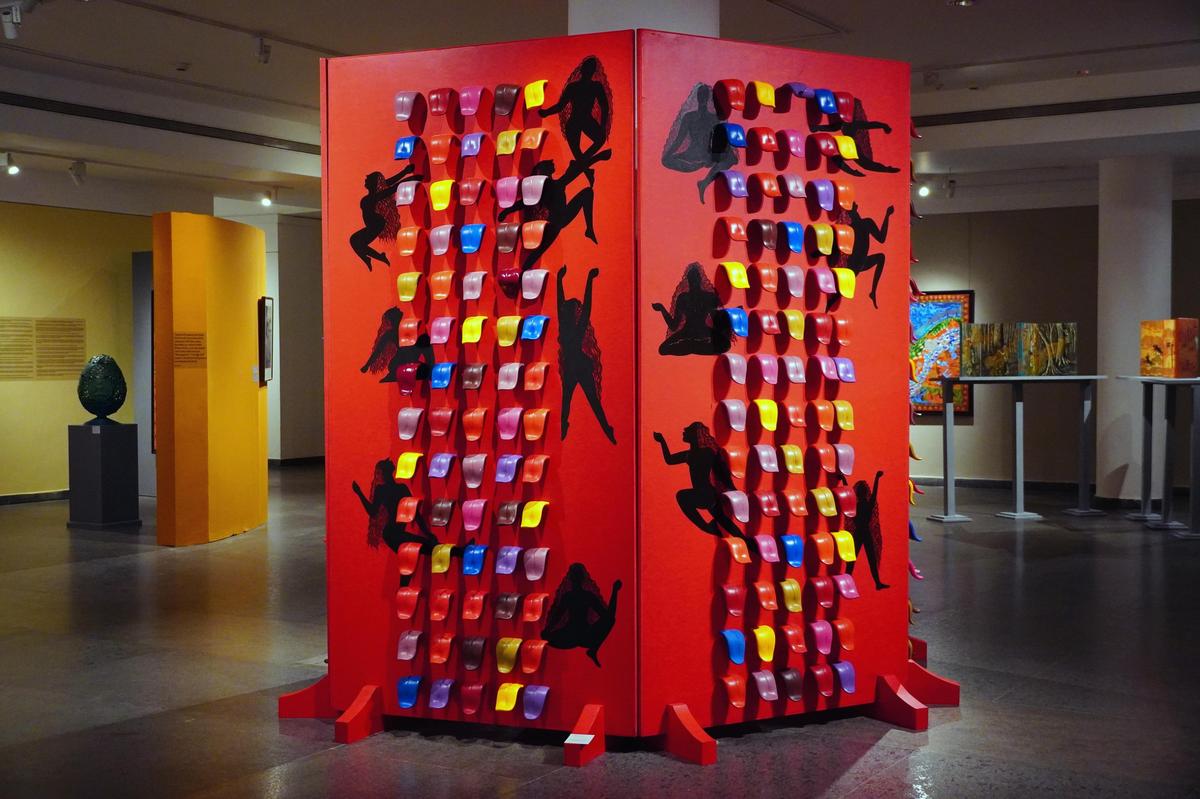
From Kaal Netra by artist Seema Kohli
| Photo Credit:
Special Arrangement
“For me, the tongue is a space of taste, it doesn’t have to do with food alone; even when we are listening to good music or enjoy the beauty of a flower, there is a sense of rasa in our mouth. The tongue is the most sensitive part of our body without which we cannot complete the idea of the five senses.”
Seema elaborates, “All manner of temptations stem from the tongue. We speak with it, use it to praise or incite action, it is used to articulate our imaginations. Every desire is based on the tongue and I have tried to depict it as symbol of desire with this installation.”
She goes on to explain, “As long as there is temptation or a desire to live, one will live. There has to be something that keeps you excited about life. Ambition is a desire, as is the wish to give up everything. There are many temptations, and there always will be.”
Kaal Netra by Seema Kohli is currently on display at the National Gallery of Modern Art.
Published – October 08, 2025 06:39 pm IST








